We’d like to thank Katy over at weight loss holidays for this deliciously rich recipe. It’s a lovely alternative to our regular butternut squash curry and the addition of the eggs makes it really filling.
For the Curry:
2 tablespoons olive oil
1 onion, peeled and sliced
4 cloves garlic, crushed
1 thumb ginger grated (freeze first and grate skin and all)
2 teaspoons each of turmeric, cumin, paprika, coriander and curry powder
½ teaspoon chili powder
1 tin (425g) coconut cream
200ml vegetable stock
1 large butternut squash (about 2kg) peeled, deseeded and cut into 2 inch (5 cm) cubes
1 kg vegetables, chopped (we used komatsuna, a spicy Japanese green a bit like chard or spinach.
8 – 12 eggs, hard boiled and peeled (see Chef’s Tips 2 and 3)
Serves up to 10 servings.
Serve 1 or 2 eggs per person (you don’t need that many eggs as we are assuming you will freeze some or eat some in phase 2).
1. Fry the onion in the oil for 3 minutes, add the garlic, ginger and powdered spices and fry for 1 more minute.
2. Add the coconut cream, stock and butternut squash, cover, bring to the boil then simmer (you are 20 – 40 minutes before serving).
3. Add your vegetables immediately or an appropriate amount of time before serving and stir.
4. Add your hard-boiled eggs (or drained chick peas)
5 minutes before serving and heat through being careful not to break up the eggs.
Chef’s Tip 1 – Run your eggs under cold water after hard boiling them to avoid a dark mark between the yolk and white.
Chefs Tip 2 – Freeze (without hard boiled eggs) for use later in phase 1 or 2 – a re-used liter ice cream tub is great for 2 portions.
Chef’s Tip 3 – still works well without the kg of vegetables.
Chef’s Tip 4 – new season butternut squash is very hard (October to December) and takes about 40 minutes to cook, after storage (April to August) it will cook in half the time.
Chef’s Tip 5 – this tastes better after 2 or 3 days in the fridge and after freezing (although the butternut squash does disintegrate with time) so make a good big batch early on in phase 1.
It is also great at room temperature for lunch out or cold as a snack if you are struggling (it is sweet and creamy and good for you which will probably hit the spot).
Serve with spiced rice and yoghurt accompaniment
For the spiced rice:
200g whole grain rice (dry weight – we used basmati)
Salt
1-tablespoon of olive oil (optional)
1 or 2-tablespoon cumin seeds
2-teaspoon ras el hanout (or curry powder or other spice)
Serves 4
1. Cook your whole grain rice a few minutes less than normal, drain and run under cold water, let dry for a few minutes.
2. Fry your rice without oil in a non-stick frying pan until nearly heated through.
3. Add the cumin seeds, spices and the olive oil if you are using it.
4. Fry for a couple more minutes until completely heated through.
Chef’s Tip 1 – Great for reheating yesterday’s rice
Chef’s Tip 2 – Great for entertaining – you don’t need to try and guess when you will want the main course and you won’t get distracted and end up with overcooked rice.
For the Phase 1 yoghurt accompaniment:
1 pot natural live yoghurt (full fat or low fat)
I teaspoon turmeric, paprika or other spices Stir
Stir and leave to infuse for at least an hour. It gets better with time so you can make enough for a few days and keep it in the fridge.


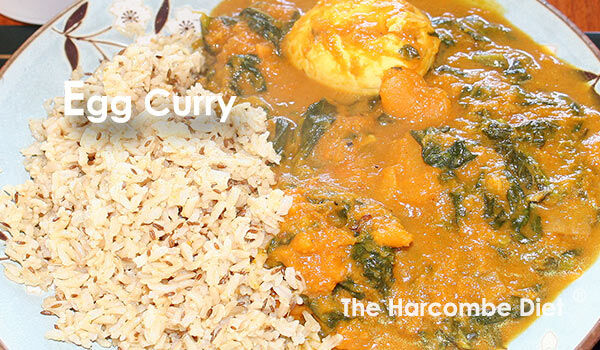
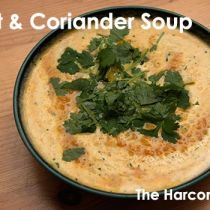
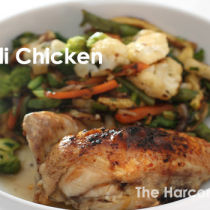
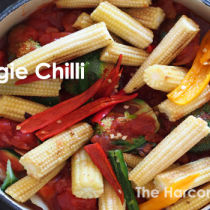
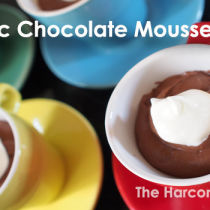


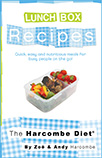
Are stock cubes ok on all phases?
Yes. As long as there are no ‘nasty’ ingredients in them.
Hi,
I do understand in this recipe there is fat and carbs?
The butternut squash curry has coconut cream , eggs and then served with brown rice?
I’m on phase 1. Thanks
Thanks
Don’t worry about mixing on Phase1. Leave out the eggs for a Phase 2 carb meal (you could also leave out the coconut cream but the amount per serving is very small)
Can I use coconut cream instead of creamed coconut in the butternut squash curry? I’m in phase 1.
should be fine
How does coconut cream fit into phase 1?
If this is a phase 1 recipe then coconut cream doesn’t work.
If it’s phase 2 then u can’t mix carbs and fats…
confusing !
The amount per person in the recipe is really small so shouldn’t be an issue. If you’re really concerned, then just leave out.
Surely by adding eggs, to the curry and then serving it with rice, you are mixing carbs and fats – the big no-no, or have I got something wrong?
We don’t worry about the mixing rule on phase1 as it’s already quite strict. If it does worry you, then just leave out the eggs.